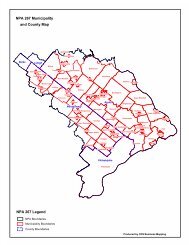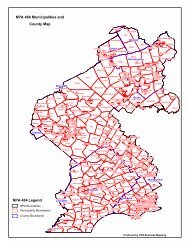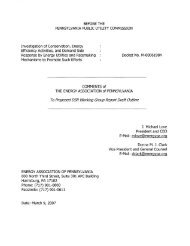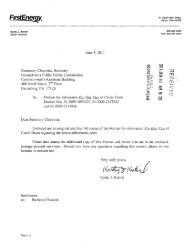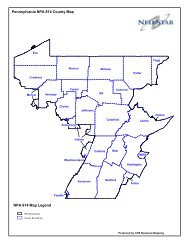2010 Report - Pennsylvania Public Utility Commission
2010 Report - Pennsylvania Public Utility Commission
2010 Report - Pennsylvania Public Utility Commission
You also want an ePaper? Increase the reach of your titles
YUMPU automatically turns print PDFs into web optimized ePapers that Google loves.
Figure 10 <strong>Pennsylvania</strong> aggregate non-coincident peak load (MW)32,000HistoricForecasts31,500200831,000200930,50030,00029,500<strong>2010</strong>29,00028,50028,00027,50027,00026,50026,00025,50025,0002000 2001 2002 2003 2004 2005 2006 2007 2008 2009 <strong>2010</strong> 2011 2012 2013 2014Forecasting TrendsIntroductionLoad forecasting is an imprecise science affected by many unpredictable factors. These factors canamplify minor inaccuracies into substantial errors when they are relied upon for the planning ofmajor construction projects, which take several years to design and build. During the 1960s andearly 1970s, rapidly increasing demand for electricity drove the need for additions of large, baseload generation facilities. The <strong>Commission</strong>’s aggressive action taken after the 1965 NortheastBlackout during a period of electric power deficiency also contributed to the increase in generatingresources. Subsequently, however, the interruption of this growth pattern by the Arab oil embargo,particularly in the industrial sector, distorted the historical capacity-load relationship, resulting inrelatively large reserve margins. Several years of relatively moderate growth were required tolower margins to a more acceptable level.While the overall growth rate has substantially declined and, although generation is no longerregulated by the <strong>Commission</strong>, utilities must continue to forecast future demand within a reasonablerange of accuracy that insures a reliable future supply of electric energy. In a deregulatedmarketplace, forecasting is important for applications such as energy purchasing, generation andinfrastructure development.Forecasting MethodologiesIn order to provide an adequate and reliable supply of electricity to the consuming public, EDCsmust continue to forecast customer demands. Although EDCs are no longer the sole providers of22<strong>Pennsylvania</strong> <strong>Public</strong> <strong>Utility</strong> <strong>Commission</strong>



